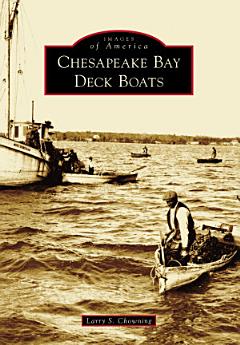Chesapeake Bay Deck Boats
avr. 2021 · Arcadia Publishing
E-book
128
Pages
family_home
Éligible
info
reportLes notes et avis ne sont pas vérifiés. En savoir plus
À propos de cet e-book
During the 1880s, Chesapeake Bay boatbuilders began constructing small wooden open boats, referred to as deadrise boats, out of planks with V-shaped bows. As boatbuilders created larger deadrise boats, decks were installed to provide more work and payload space; these deck boats also had a house/pilothouse near the stern and a mast closer to the bow of the boat. Deck boats were powered by gasoline engines but also utilized sails and wind. From the 1910s to the 1940s, auxiliary "steadying" sails were raised to help steady the boat when encountering adverse seas. More deck boats were built in the 1920s than in any other decade. Over the history of the boats, several thousand worked the bay in the freight business, were used to buy and plant oysters, worked in the bay's pound net fishery, and dredged for crabs and oysters. Approximately 40 boats are left on the bay. A few still work the water. Some have found new life as recreational yachts, and others are education boats owned by museums and nonprofits. In 2004, boat owners formed the Chesapeake Bay Buyboat Association, which holds an annual rendezvous at different ports as a way to educate the public about this unique aspect of Chesapeake Bay maritime history.
À propos de l'auteur
Larry S. Chowning, author of 11 books, wrote the 260-page book Chesapeake Bay Buyboats, a definitive history of deck boats, in 2003.
Donner une note à cet e-book
Dites-nous ce que vous en pensez.
Informations sur la lecture
Smartphones et tablettes
Installez l'application Google Play Livres pour Android et iPad ou iPhone. Elle se synchronise automatiquement avec votre compte et vous permet de lire des livres en ligne ou hors connexion, où que vous soyez.
Ordinateurs portables et de bureau
Vous pouvez écouter les livres audio achetés sur Google Play à l'aide du navigateur Web de votre ordinateur.
Liseuses et autres appareils
Pour lire sur des appareils e-Ink, comme les liseuses Kobo, vous devez télécharger un fichier et le transférer sur l'appareil en question. Suivez les instructions détaillées du Centre d'aide pour transférer les fichiers sur les liseuses compatibles.





